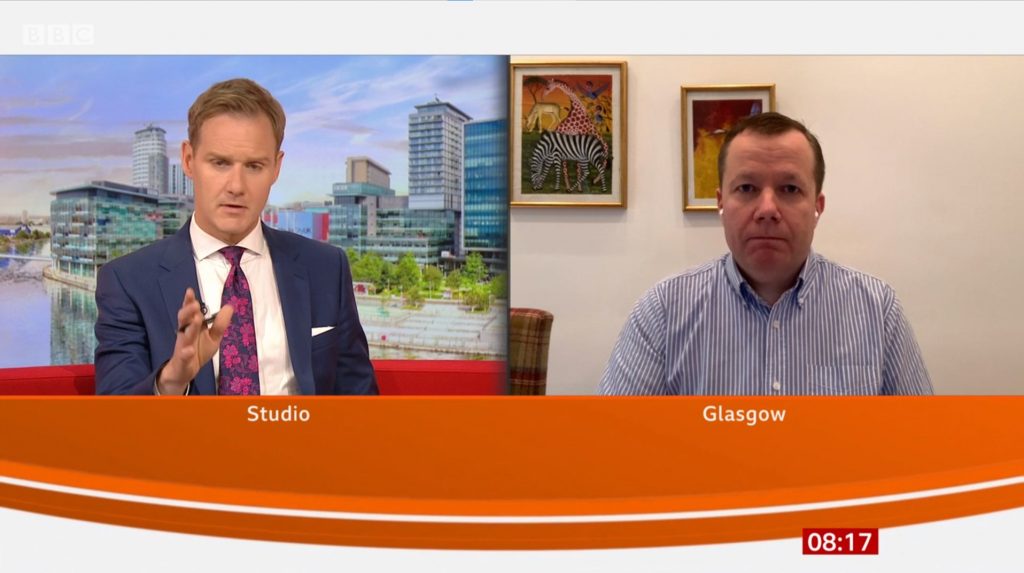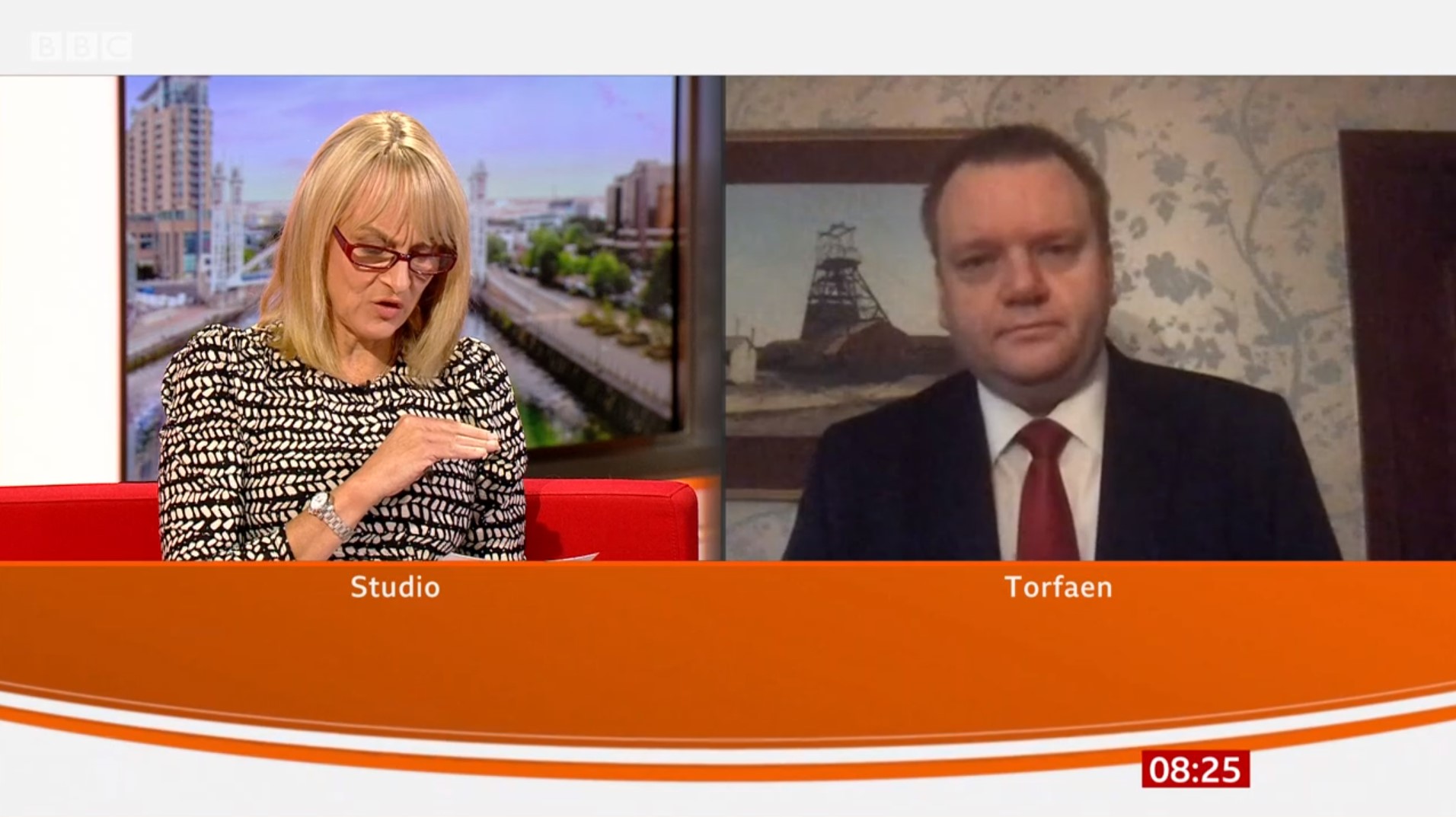I posted a Twitter thread on this subject earlier, but I thought it was worth exploring a little more here.
This morning I was watching BBC Breakfast, and Louise Minchen was interviewing Labour’s Shadow Home Secretary, Nick Thomas-Symonds from his home constituency in Torfaen.
What I couldn’t get over was the poor resolution of Thomas-Symonds’ webcam. He’s on the shadow front bench and was conducting a media round today that included appearances on Sky News, LBC and the Today Programme.
It was expecially noticeable because he followed a contribution from Scotland’s national clinical director who looks like he has a really good set-up. He was well lit, and looked like he was using a standalone HD camera or webcam.

I don’t really mean to pick on Thomas-Symonds in particular, because the same issues he was facing are true of any number of politicians and pundits – people for whom media appearances are a vital part of their public image.
But it’s surprising that so few still manage to get it right.
This morning the picture was dark and grainy – which is usually down to a combination of low resolution laptop webcam and poor lighting. Today was a gloomy overcast day – I had to turn my lights on indoors to work with. That probably didn’t help.
Might I humbly suggest that anyone with a public image to project, might do at least some of the following?
- Sort out your lighting. TV studios have all kinds of lighting and it’s usually there to make presenters and contributors look good. They don’t just have a standard lightbulb somewhere up high. So invest in one or two softboxes. They’re cheap, and you can angle them so that you get some definition in your appearance – some light and shade. They don’t need to be massive, but you can get small ones on stands inexpensively that you put just off camera at angle. You then have a controlled light source, and don’t have to worry so much about how sunny or dark outside it is today.
- Get a better camera. The built-in webcam on your laptop is not much good. Even on expensive MacBook Pros, the quality is low. They’re fine for work Zoom calls or whatever, but they look rubbish on TV. It’s easy to buy a separate webcam and plug it into your computer. Go into the settings of your teleconferencing software and select the new camera. Now it’s true that webcams were in very short supply at the start of lockdown, but supplies are coming back on-stream now. I like Logitech ones, but there’s an even better option…
- Use a ‘proper’ camera. By that I mean use a DSLR, mirrorless or compact camera. The kinds of consumer camera that can shoot HD or even 4K. The sensors in these cameras are so much better than in phones and laptops. And the good news is that it’s really not hard to connect to them to your regular Zoom calls. Canon, Fujifilm, Panasonic and even GoPro all have software that lets you connect your camera by USB to your laptop and be seen by applications like Zoom. But there’s another inexpensive way that works with lots more cameras. Recently there has been a glut of “HDMI Video Capture” sticks on Amazon and eBay. Retailing for as little as £10, these have a USB connection at one end and an HDMI connection at the other. Get a microHDMI to HDMI cable, plug it into the capture stick and your camera’s output is available in Zoom et al. I’ve tried a couple of these and they work perfectly. Just make sure you can turn off info in your camera menu. If you don’t have a camera, then the Sony RX100 Mk III at around £475 is excellent, with face tracking and a nice clean HDMI out. Pair this with a tabletop tripod and you’re away. It has a “fast” lens that means that if you separate yourself in distance from your background a little, you’ll get that lovely blurred “bokeh” that looks so pleasing on the eye.
- Get a proper microphone. The one in your laptop or iPad is fine, but it’s not good. Similarly, the one in the headset that came in the box with your phone will do in a pinch but is basically rubbish. Go out and buy a lavalier or lapel mic from a company like Rode. They’re those shirt/tie clip-on style mics that you get in TV studios. Plug the other end into your laptop and we’ll hear you in good quality.
I reckon that if you didn’t have any of the kit before, you’d be looking at spending around £700 for everything I’ve suggested. That’s not super-cheap, but compare that with how much an MP might spend on a good suit for an appearance on Newsnight or Question Time! Nobody’s going to see that expensive pair of shoes you bought for a while, so spend that money on a camera and lighting rig.
Yes – everyone has worked a bit on their backgrounds with carefully chosen books and plants, or whatever, but using the right kit is also important. I realise that there’s a “we’re all this together” kind of camaraderie that comes from doing interviews from your kids’ bedroom, but it looks like we’re in this for the long hall, so upping your tech skills is a smart career move I’d have thought. If I can both see and hear you, then that probably helps you politically.
And if all of this is too complicated, ask someone who’s on YouTube or Twitch. There are loads of instructional videos about cameras, lighting and microphones.
Incidentally, I realise that not everyone has the same bandwidth in their locality, but I’d certainly explore what was available. Similarly, I’d be upgrading my router or installing a mesh WiFi network if necessary to remove or reduce as many bandwidth issues as possible. But those are things to talk about another time.


Comments
One response to “Four Months In – Many Politicians are Still ‘Zooming’ Badly”
Since we’ve gone full remote working I have at least 2-3 video calls a day. Almost everyone had headphones with a mic, so sound was never a problem. Lighting though?
At first it wasn’t great, people would sit at their dining room table in front of a window. All you could see was a dark blob where you knew their face should be. Then slowly but surely people learned that if you’re back lit, that’s bad. But if you’re front lit, that’s great.
For my team, some have moved to rooms with better lighting. Some have no choice, but have added some front facing light. And now it’s all _much_ improved.